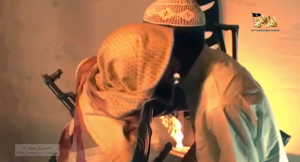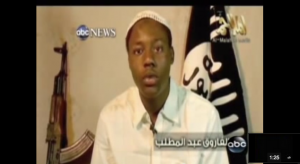Last year, after the drone white paper demonstrated how shoddy were the Obama Administration’s claims to be able to kill Anwar al-Awlaki, a group of Senators decided the best way to avoid difficult questions but appear to address the issue would be to have the FISA Court review drone and/or targeted killings before they happened. I did a series of posts laying out what a horrible idea that was. I showed:
- The FISA Court has a history of unquestioningly accepting evidence from dubious sources, including torture
- Certain factual issues a drone and/or targeted killing court would need to judge — including the scope of the AUMF — are not well defined and should not be defined by the Executive in secret
- The Administration claims the authority to conduct targeted killings for pre-crime, which a court has no way of assessing (and which should not be sanctioned in law)
- Decisions by the FISC — such as interpreting “relevance” to authorize vast suspicionless collections of data and permitting back door searches of content collected off of programatic orders — prove that the court no longer fulfills its originally intended purpose
As a reminder, I argued the claims in that last bullet in February 2013.
The Fourth Amendment holds that judges must decide whether wiretaps are reasonable or not.
Yet after the FISA Amendments Act, that’s not what happens. Rather, judges are deprived of the ability to do more than review the government’s certifications about targeting and minimization. Once a judge has done so, however, the government can not only bulk collect telecommunications involving someone overseas, but it can later search on those telecommunications to get to the US person’s side of the conversation, apparently without court review on the back side.
Effectively, discretion over this massive system has collapsed back inside the Executive Branch.
And all that’s before the government’s use of the secret law that Mark Udall and Ron Wyden keep complaining about, which probably involves — in part — the bulk collection of geolocation information from cell phones. It’s also before the government has interpreted the word “relevance” to justify other massive collection programs (at a minimum, of things like hydrogen peroxide and acetone purchases) involving US persons.
In short, the FISA Court has become a venue not for judges to exercise individualized discretion about probable cause. Rather, it has become the venue in which the government uses the secrecy offered to develop expansive legal interpretations to support vast new spying programs it won’t even tell Americans about. Not only the promise of individualized judicial discretion has been eliminated, so has the very premise that American should know what laws they are subject to.
In June and August of last year, Snowden disclosures led the rest of the world to recognize that the FISC had authorized back door searches without judicial review of programmatic collection, had authorized the bulk collection of data from cell phones (though more limited collection of location data), and had interpreted the word “relevance” to mean “all.”
That is, my argument that the FISC was broken and therefore couldn’t be trusted with matters of life and death came to be accepted by just about everyone, up to and including Administration officials who agreed to make cosmetic (though not functional) changes to the FISC.
Along the way, we have also learned that the government is not complying with Congressional intent with respect to defendants’ rights, meaning the efficacy of the FISC in protecting constitutional rights has avoided the tests it should have had.
Yet the changes we have made — effectively inviting the FISC to call their existing clerks “advocates” to provide the patina of adversarial review — really are no more than cosmetic, and USA Freedumber has aspects that would weaken the FISC even further.
I thought all this had led people to see the folly in using the FISC to judge drone and/or targeted killings.
Nope.
After yesterday’s release of the actual OLC memo authorizing Awlaki’s assassination, those looking for an easy fix are again suggesting we use a FISA Court to judge the assassinations of American citizens. Here’s the NYT editorial page:
[T]he memo turns out to be a slapdash pastiche of legal theories — some based on obscure interpretations of British and Israeli law — that was clearly tailored to the desired result. Perhaps the administration held out so long to avoid exposing the thin foundation on which it based such a momentous decision.
[snip]
Awlaki’s due-process rights are dealt with summarily. The “realities of combat” meant that no serious due process was possible, the memo said, citing the 2001 Authorization for Use of Military Force that allows antiterror measures anywhere. And the memo never questioned whether the Defense Department and the Central Intelligence Agency, which operate the drone programs, would properly follow international law. “We understand,” Mr. Barron wrote, that the two agencies “would conduct this operation in a manner that accords with the rules of international humanitarian law governing this armed conflict.”
Blithely accepting such assurances at face value is why these kinds of killings are so troubling, and why we have repeatedly urged that an outside party — such as the Foreign Intelligence Surveillance Court — provide an independent review when a citizen is targeted. How did the Justice Department know that capturing Mr. Awlaki was not feasible, or that the full force of a drone strike was necessary?
I argued last year that the urge to give this task to the FISC reflects laziness, an unwillingness to deal with the hard work of reining in expansive Executive Authority, and I think the disclosures of the last year make that more clear.
And yesterday’s memo adds to that case.
As I noted in a piece for The Week, yesterday’s memo doesn’t even consider the question of judicial review, which the white paper at least did (it is possible that Barron considered judicial review in the first, February 2010, Awlaki memo).
A comparison of the memo with the white paper reveals that one section of the white paper does not appear in the memo. (This section may appear in that February 2010 memo, possibly along with the discussion of imminent threat and feasibility of capture; see page 41 of this highlighted memo for what remains redacted in the existing memo.)
In the white paper, that section explains why judges can’t review this killing. “[U]nder the circumstances described in this paper, there exists no judicial forum to evaluate these constitutional considerations,” DOJ wrote in a November 2011 memo after Awlaki’s death. “Were a court to intervene here, it might be required inappropriately to issue an ex ante command to the President and officials responsible for operations with respect to their specific tactical judgment to mount a potential lethal operation against a senior operational leader of al-Qa’ida or its associated forces.”
And neither the OLC memo nor the white paper deals with a very fundamental point Colleen McMahon made, when she dealt with questions about how the law required the government to deal with someone alleged to be like Awlaki.
Judge Colleen McMahon, who in January 2013 originally ruled on the Freedom of Information Act suit brought by the ACLU and the Times, didn’t agree. She noted that the Treason Clause — the means of dealing with traitors enshrined in our Constitution — is reserved for the courts, not the executive. “[T]he Treason Clause appears in the Article of the Constitution concerning the Judiciary — not in Article 2, which defines the powers of the Executive Branch,” McMahon wrote. “This suggests that the Founders contemplated that traitors would be dealt with by the courts of law, not by unilateral action of the Executive.”
Somehow, that very basic constitutional fact never made it into a memo secretly authorizing the killing of an American citizen — alleged to be a traitor — with no due process. Either Barron dealt with the question of judicial review, but not the Treason Clause, in his first memo, or he neverdealt with it, and DOJ added that section in the white paper to make the review look more reasonable.
Our Constitution says that before you can deem someone a traitor and execute him, you have to go to the judges established in the Constitution, the ones that permit confrontation and juries and the like. But in secret, the Executive Branch either ignored the question entirely until after killing a citizen (if the white paper was the first the Executive made its thin judicial review argument), or it did not consider the Constitutional requirement.
Yet those seeking the easy answer are rushing to have a demonstrably failed court, not the courts that have worked for hundreds of years, to answer such questions.
Yesterday’s memo made it clear that Awlaki’s killing was still substantially decided based on the evidence tied to the UndieBomb attack, an attack whose culprit was tried in an ordinary old Article III Court. In that case, the government dodged presenting its key evidence against Awlaki, perhaps recognizing that it either wouldn’t stand up against adversarial review, or that a description of the deal it offered to get that testimony would raise legitimate questions about its accuracy.
And yet, with the government having declined the opportunity to prove the value of its evidence against Awlaki in the traditional fashion, people are rushing to make it easier for them to avoid doing so before killing an American.
Why? Why, after a year of lessons in why the FISC cannot even do its existing job adequately, would anyone suggest they should also weigh in on matters the Constitution explicitly assigns to traditional Article III courts?
 Two days before the Administration was due to release a memo laying out its rationale for drone-killing American citizen Anwar al-Awlaki, AQAP released a video that challenges the narrative the Administration has used for doing so.
Two days before the Administration was due to release a memo laying out its rationale for drone-killing American citizen Anwar al-Awlaki, AQAP released a video that challenges the narrative the Administration has used for doing so.
